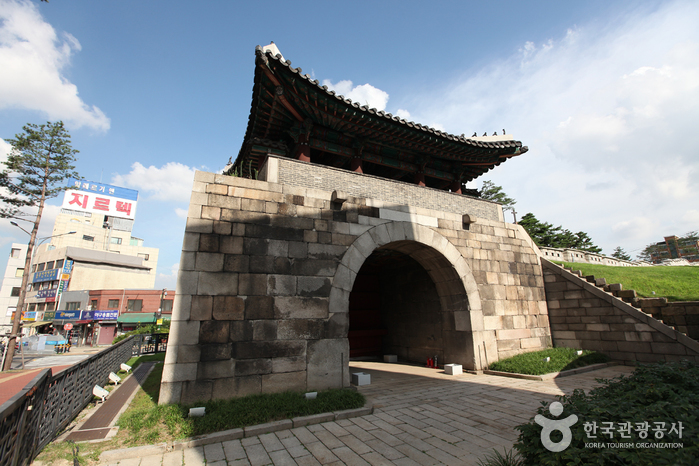Discover the Rich History of Gwanghuimun Gate
Step into the past and immerse yourself in the fascinating history of Seoul by visiting Gwanghuimun Gate, a historic landmark that bears witness to the city’s tumultuous past. Originally built in 1396, during the reign of King Taejo, this gate served as an important entry point to the capital city. Also known as Sugumun Gate or “corpse gate,” it played a significant role in funeral processions that passed through it on their way to the east. Today, Gwanghuimun Gate stands as a testament to the resilience and spirit of the Korean people.
A Gate Rebuilt: From Destruction to Restoration
During the Imjin War in the late 16th century, Gwanghuimun Gate suffered extensive damage, making it nearly impossible to locate its original position. However, in 1711, during the reign of King Sukjong, reconstruction efforts began, bringing the gate and its watchtower back to life. Even during the Japanese occupation when the fortress walls were demolished to make way for tram tracks, Gwanghuimun Gate managed to survive. Sadly, it fell into neglect during the Korean War, but in 1975, restoration work was undertaken, relocating the gate to a spot 15 meters south of its original location to accommodate the expanding city.
A Convenient Location
Getting to Gwanghuimun Gate is a breeze thanks to its strategic location. Simply take the Seoul Subway Line 2, 4, or 5 to Dongdaemun History & Culture Park Station and head towards Exit 3. As you step out onto the bustling streets, you’ll find the gate positioned across the street to your right. Its close proximity to the subway station allows for easy access, making it an ideal stop on your Seoul itinerary.
As you explore Gwanghuimun Gate, take a moment to appreciate its architectural beauty and imagine the countless historical events that have unfolded within its walls. The gate serves as a powerful symbol of resilience and determination, making it a must-visit destination for history enthusiasts and curious travelers alike. So, come and discover the captivating history of Seoul at Gwanghuimun Gate!

